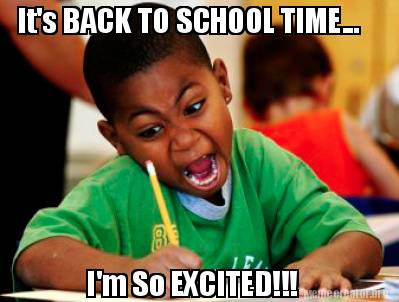I successfully completed my first unit plan, at least I think I did! The Unit is called "Exploring Careers in Agriculture" for my Introduction to Agriculture class. Here are the goals for my unit:
|
Introduction to
Agriculture
Unit Plan
Class Sessions: 15 (3 weeks)
Length of Sessions: 40 minutes
Date:
Instructor: Sarabeth Royer
|
Unit Goals: At the completion of this unit, students will be able to: …
1) Explore different careers in agriculture, natural resources, and other related industries.
2) Identify possible individual career opportunities and requirements for the jobs/careers related.
3) Discuss desirable skills for employees, and pertinent information for job interviews and resumes.
4) Identify a community member and interview them about their job/ career.
5) Discover ways that jobs can be integrated into the four SAE types.
6) Analyze the PA FFA Job Interview CDE.



Coming from a production background myself, I used to hate this saying, because FARMING IS AN IMPORTANT aspect of agriculture. However, there are so many different careers in agriculture, natural resources, food science, etc. that aren't just farming. Thus, I was pretty excited for this unit in my Intro To Agriculture Class. As underclassmen, these students will still be learning about how big agriculture really is!
Original Goals
- So my original goals were to create a unit about exploring careers in agriculture. My cooperating teacher gave me full liberty to choose what and when to teach! This is exciting and hard at the same time. What is vital for these students to learn, and what is just extra?
Feedback Received
 - Peer editing was super helpful. This process not only allowed me to look at my peers outstanding work(!!!!) but it also provided me with constructive feedback. While most comments were regarding objectives and lesson titles, I also received important feedback for assessments. How am I really assessing my students? Is this the most appropriate or helpful way to encourage student growth? Originally, I had a set of individual assignments. However, one of my peers suggested a "portfolio" of sorts... after all the students are learning about careers!!! This was very helpful.
- Peer editing was super helpful. This process not only allowed me to look at my peers outstanding work(!!!!) but it also provided me with constructive feedback. While most comments were regarding objectives and lesson titles, I also received important feedback for assessments. How am I really assessing my students? Is this the most appropriate or helpful way to encourage student growth? Originally, I had a set of individual assignments. However, one of my peers suggested a "portfolio" of sorts... after all the students are learning about careers!!! This was very helpful. Changes Made
In addition to edits that my peers helped me with, I also combined two lessons and provided my students with a work day to finish up their portfolios. I am also toying with another day for students to present their "career interviews." At the beginning of the unit, students are tasked with interviewing someone in a career they are interested in. This could provide students the chance to present material to the class, and also would help to spread more career awareness. I am still toying with this idea... any suggestions!?
For Future Reference
For future unit plans, I need to remember:
1) My classes are only 40 minutes, plan accordingly
2) Signing out the library computer lab is not always the solution. How can I integrate technology while NOT being in a 1:1 school
3) RE-READ the unit plan for spelling, punctuation, etc.
4) Ensure that lesson titles are in the form of a question
5) Really be considering assessment/evaluation. How am I letting students SHOW me their understanding/learning?
Well that's all for now folks, Thanks
-Sb

